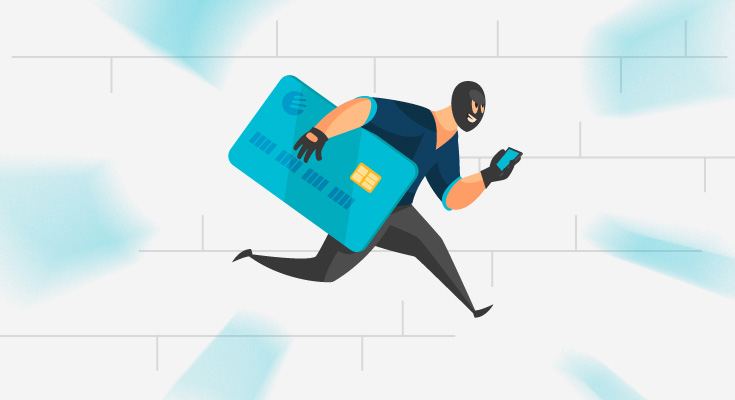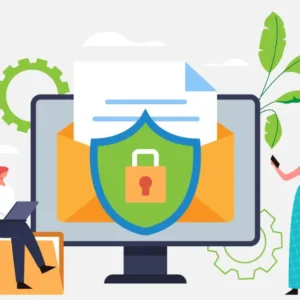Credit card scams and banking mishaps have long been in the news. Due to dishonest officials, The United Kingdom saw banking losses and theft totaling up to £846 million in a single year.
Due to the diversity of techniques used by these con artists, credit card frauds have established themselves as the top financial scam. While scams like stealing banking pins and altering account information are common, not everyone is aware of credit card scams.
What is a Credit card scam?
As the name suggests, credit card scams are scams that involve credit cards. This could include credit card information theft, payments scam, and so much more. Fraudsters do credit card fraud just to purchase products or services, steal someone’s identity, or transfer money into their accounts. As credit cards are a safer and more convenient method of payment compared to cash, almost everyone has them. This leads to an increase in credit card fraud.
Credit card fraud attempts happen almost every day, and you can start to see the same patterns being used over and over again. If you get stuck in a credit card fraud, then you can say goodbye to your hard-earned money in minutes. The good thing is, most credit card companies will not charge you if you’re able to prove that you were a victim of a scam.
How do Credit Card Scams work?
Scammers are becoming more vicious than ever, thanks to technological improvements in every industry. They work around technology’s limitations, con other card users, and continually devise new schemes. Their strategy is to obtain the cardholder’s personal or financial information to profit from it. The con artist will find a means to get through, whether they have to steal or assume someone else’s identity.
Most Popular Credit card scams:
1. Credit card skimming:
When you swipe your card at an ATM, Point of Sale or retail location, a scammer uses a data skimming device to steal your credit card information.
Credit card skimming happens when your credit card data is stolen from an ATM, Point of Sale, Retail store machine, or anywhere else. As soon as you swipe your card, the credit card skimmer steals the information from your credit card. Afterward, they use the stolen information to carry out fraudulent purchases or create a phony credit card. The black/grey stripe on the back of your card is the target of these machines. The fraudsters then store your card number and other account information for future use. It is one of the most popular credit card scams.
2. Billing scams:
As the age of digital transactions is at its peak, users take advantage of digital bill payments. An automatic mechanism supports these recurring payments. Unfortunately, some businesses impose extra and unapproved fees, cheating on the confidence that has been placed in them. These charges occur in vast numbers yet go unreported.
3. Credit Insurance scams:
Several businesses offer credit insurance plans for borrowers over a loan, particularly for those who face difficulties repaying their debts, owing to various factors. But unfortunately, these debtors are seduced by the fraudulent suppliers’ inexpensive and enticing premium payments.
However, once all the premium has been paid in full, the corporation stops providing insurance or protection. The con artist disappears with the money, leaving the financially unstable and even more impoverished.
4. Wi-Fi scams:
If you’re one of those people who believes that free public Wi-Fi is ideal, this may bust your bubble. The Wi-Fi Connectivity Scam targets sources using free hotspot connectivity to steal money from their account. Allow me to interrupt you there. How, then, does the con operate?
Data transmission is a crucial capability that’s accessible through Wi-Fi platforms that allow you to connect to the internet. Additionally, the con artists behind these swindles put up a system that communicates and records your personal information and current activity. For instance, your bank information and account login will be retained if you check in to your online payment source or execute any transactions while being connected to a public Wifi. As a result, the con artist can quickly obtain your personal information and use it to defraud you of your money.
5. Interest Rate Reduction scams:
The Interest Rate Scam seeks to defraud consumers by promising irresistible and alluring interest rates. An automated call from the perpetrator of this elaborate fraud welcomes the victim. The bot gains your trust by reciting your account name or number while posing as your credit card facilitator.
The majority of consumers succumb to this kind of deception without thinking twice. It sounds like a rare chance because low-interest credit card rates are uncommon. Your account will be charged fees as soon as you sign up for the services. However, despite what the dishonest dealer claims, the conned buyers do not receive support or lowered loan rates.
How Can Credit Card Scams Be Avoided?
Credit card scams are continuously expanding in quantity and causing increasing losses among victims. Precautions and awareness are the only solutions that apply to these circumstances. Therefore, one cannot ignore the necessity of raising awareness.
Here are some steps that everyone should take to prevent experiencing the same tragedy that millions have encountered in the face of a credit card scam:
- Use public hotspots sparingly.
- Make sure you aren’t using public Wi-Fi to access your bank account or to carry out any transactions.
- Attending calls coming from unknown numbers is not advisable.
- Automated robocalls carry a significant danger of being recognized as a scam.
- Don’t divulge your private details.
- Sharing account information has never been beneficial to anyone.
- Keep your verification codes and account pin confidential.
- While you swipe your card, pay attention to your surroundings.
- You can submit a report to the Federal Trade Commission if you’ve been a scam victim.
- Take your time, and don’t make any snap judgments.
Summary:
The most common financial scam today is a credit card scam. As discussed above, credit cards are extremely safe to use, regardless of that, millions of consumers worldwide fall for credit card scams annually. Credit card Scams target users who connect to free hotspots and eventually steal money from their accounts.
The Interest Rate Scam aims to deceive people by making promises of an appealing interest rate. The victim is greeted by an automated call from the person who is carrying out this sophisticated scam. Unfortunately, most consumers succumb to this trickery without giving it much thought. A client’s account is charged fees as soon as they sign up for the services. Unlike dishonest vendors, targeted purchasers do not get assistance or favorable financing terms.





